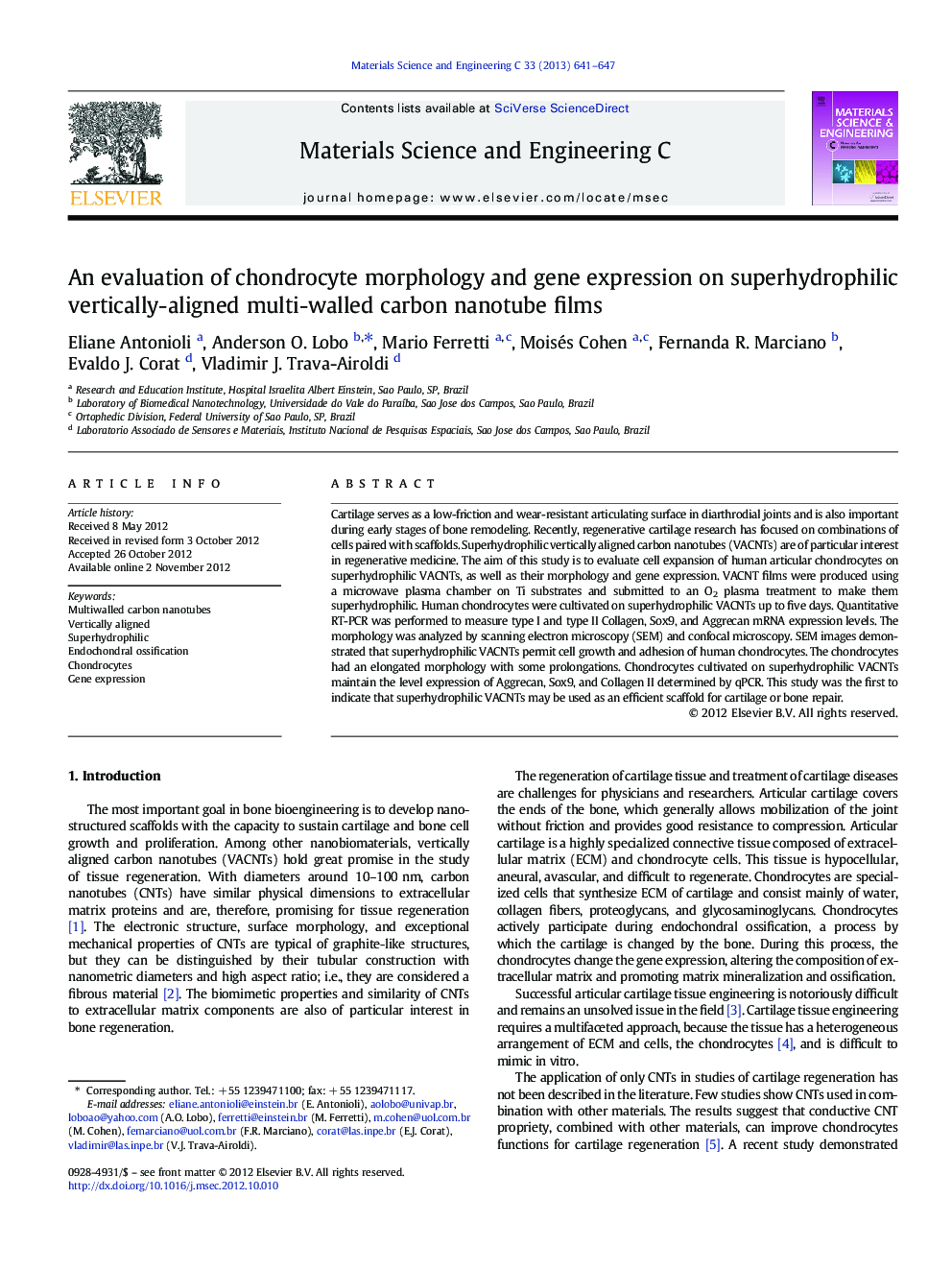| Article ID | Journal | Published Year | Pages | File Type |
|---|---|---|---|---|
| 1428862 | Materials Science and Engineering: C | 2013 | 7 Pages |
Cartilage serves as a low-friction and wear-resistant articulating surface in diarthrodial joints and is also important during early stages of bone remodeling. Recently, regenerative cartilage research has focused on combinations of cells paired with scaffolds. Superhydrophilic vertically aligned carbon nanotubes (VACNTs) are of particular interest in regenerative medicine. The aim of this study is to evaluate cell expansion of human articular chondrocytes on superhydrophilic VACNTs, as well as their morphology and gene expression. VACNT films were produced using a microwave plasma chamber on Ti substrates and submitted to an O2 plasma treatment to make them superhydrophilic. Human chondrocytes were cultivated on superhydrophilic VACNTs up to five days. Quantitative RT-PCR was performed to measure type I and type II Collagen, Sox9, and Aggrecan mRNA expression levels. The morphology was analyzed by scanning electron microscopy (SEM) and confocal microscopy. SEM images demonstrated that superhydrophilic VACNTs permit cell growth and adhesion of human chondrocytes. The chondrocytes had an elongated morphology with some prolongations. Chondrocytes cultivated on superhydrophilic VACNTs maintain the level expression of Aggrecan, Sox9, and Collagen II determined by qPCR. This study was the first to indicate that superhydrophilic VACNTs may be used as an efficient scaffold for cartilage or bone repair.
Graphical abstractFigure optionsDownload full-size imageDownload as PowerPoint slideHighlights► Chondrocytes were cultivated on Superhydrophilic Vertically Aligned Multiwall Carbon Nanotubes (VACNT). ► We have shown a correlation between gene expression and thermodynamics aspects. ► Superhydrhophilic VACNT will be an excellent substrate for cartilage and bone tissue regeneration.
